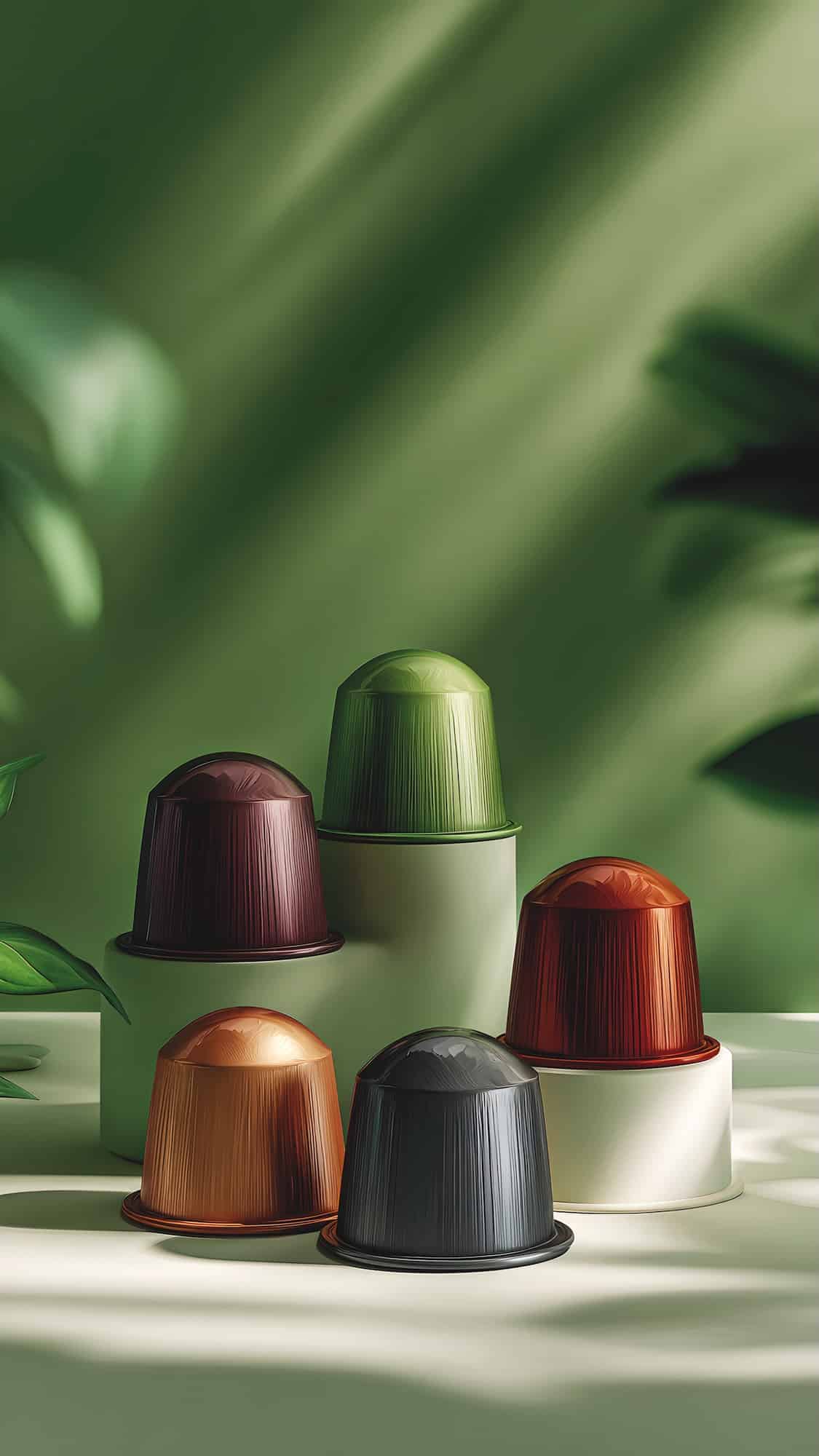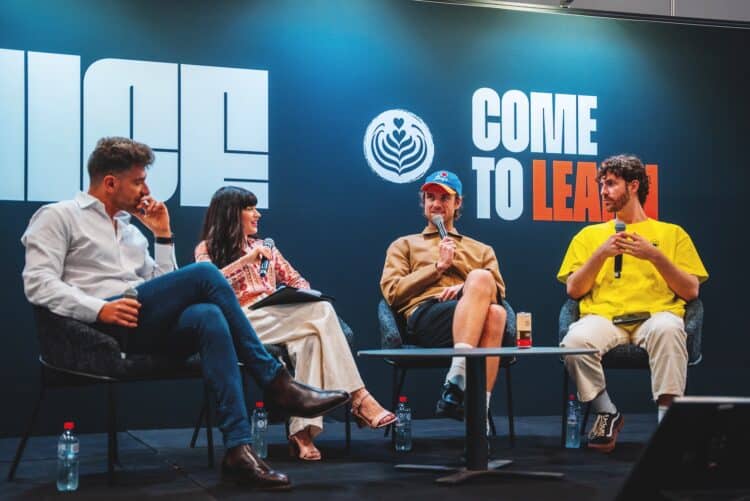Can stimulus repetition influence coffee preferences, and does the capsule market provide a new opportunity for bespoke products? IMA Coffee Hub’s Matteo Barbarossa reveals the trends the big coffee companies are exploring.
To keep their fingers on the pulse and ensure their products remain relevant in a constantly shifting market, global coffee companies are continuously identifying trends and analysing customer consumption in their pursuit to do something few rarely achieve: predict the future.
In March 2025, some of the coffee industry’s most experienced thought leaders were asked to explore the future of coffee as part of Melbourne International Coffee Expo’s (MICE) comprehensive series of educational panel discussions.
Matteo Barbarossa, IMA Coffee Hub Area Manager, was one of the speakers to take part. He spoke about the evolution of coffee products, consumer trends, and taste preferences. The million-dollar question of the panel series, according to Matteo, was the direction the industry would take over the next five years.
Million-dollar trends
“One trend I’m seeing is a growing collective consciousness among customers about what they’re drinking, where it comes from, how it’s processed, and how it’s brewed,” says Matteo.
“A coffee isn’t just a coffee anymore: it’s a full pleasure experience condensed into a cup. The future of coffee is about more than just taste – it’s about meaning, wellness, and connection.”
Outlining how speciality coffee is no longer a niche, he emphasises how consumers are becoming increasingly discerning about what they ask for in their morning cup.
“This thirst for knowledge is driving demand for single-origin and micro-lot beans, transparent sourcing, and high-quality cultivars with unique flavour profiles,” he says.
“Innovative processing methods such as anaerobic fermentation, honey processes, or even experimental hybrids are elevating the flavour journey.”
Products that consider their environmental impact are another expectation customers are no longer willing to compromise on, says Matteo. Biodegradable and reusable packaging, as well as supply-chain transparency, are reshaping how ethical sourcing is communicated to consumers.
“We’re seeing pressure for regenerative farming practices and carbon-neutral supply chains, and sustainable packaging becoming the norm,” Matteo says. “Environmental and ethical concerns are pushing innovation in every direction.”
He emphasises how the ongoing impacts of climate change continue to shape the coffee industry. With challenges affecting coffee farmers on every continent, innovative companies are looking for alternatives to traditional agriculture.
“Alternatives such as lab-grown and molecular coffee are emerging. Barley-based “coffee” for caffeine-free consumers is also on the rise, as well as hybrid drinks blending coffee with tea, juice, or plant milks,” says Matteo.
Closely linked to the demand for environmentally conscious products is health-orientated and functional items, in line with a growing sector of consumers who view their purchases through a wellness lens.
“Coffee is becoming a delivery vehicle for perceived wellness,” he says. “Coffee is now a lifestyle. Even café concepts focus on storytelling, provenance, and ritual, with high-end brewing gear now available for serious home enthusiasts.”
And with advancements in technology flowing into the domestic coffee market, smart devices and data-driven brewing are becoming mainstream.
“People can now use personalised brew profiles that are stored in the cloud and show live quality control at roasting and brew level,” says Matteo. “These tools are efficient for every coffee enthusiast.”
The power of stimulus repetition
While these trends can be incredibly influential, the tricky part is translating them into products and sales. Something Matteo and the team at IMA are particularly interested in is stimulus repetition: the act of repeatedly exposing consumers to the same or similar sensory cues to shape preferences.
He says the Mere Exposure Effect concept, theorised by social psychologist Robert Zajonc, could help form coffee preferences. The concept suggests the
more we encounter something, the more
we like it.
“People tend to develop a preference for things simply because they are familiar with them,” says Matteo.
“If a customer repeatedly experiences a particular taste in positive settings, they can develop a preference for that profile over time. Customers often need a narrative to attach to flavour, so repeating explanations about tasting notes or process can help them develop a palate and preference through cognitive anchoring.”
This theory can be used to justify the notion that coffee isn’t just about the taste – it’s also about the story.
“Repetition doesn’t always mean offering the exact same product. It can be curating a set of sensory experiences that reinforce a theme or category,” he says.
Matteo explains that through having a consistent tasting language across menus, the customer’s palate is shaped and refined via gentle cues. The repetition also encompasses an emotional dimension that can be enhanced by a customer’s baseline palate.
“When a customer always starts their day with your coffee, especially if it’s a specific brew, the repeated pairing of the coffee with routine builds attachment. The aroma, taste, and act of drinking become emotionally loaded,” he says.
“The key is to offer the client something that’s not so far away from their baseline, because if it is too different they will perceive it as something very different from what they believe is ‘good coffee’.”

Image: Simone Matos/stock.adobe.com.
Capsule potential
On influencing the customer’s palate, Matteo also believes coffee capsules hold potential to create a more targeted experience. Capsules have long been a staple of convenience culture, known for being quick, clean, and consistent. But as the specialty world merges further into the mainstream, Matteo says capsules are no longer just a vehicle for commodity-grade coffee but also an opportunity to provide a tailor-made product.
“Historically, capsules were associated with mass-market blends,” he says. “But that’s changing. We’re seeing more specialty producers applying the same precision to capsules as they do to whole-bean offerings.”
The shift signals a new chapter in which specialty and commodity-grade capsules share shelf space in grocery stores. A key driver of the evolution, according to Matteo, is the development of tailored roast profiles designed specifically for capsule extraction.
Unlike espresso or filter coffee, capsule brewing presents unique constraints, including low water volume, high pressure, and short brew times.
“Roasting for capsules is a different art form,” he says. “Only a handful of experienced roasters really know how to hit that sweet spot.”
Some roasters are already creating capsule-specific roasts, optimising everything from development time to final colour to ensure maximum expression of flavour for the brew method. Matteo says green-coffee selection for capsules is just as crucial, as it can also increase capsule brewing quality. With limited time and space to extract flavour, only certain green coffees truly shine.
“The limitations of capsules, such as small dosage and short brewing time, means you need green coffees that perform well under pressure. That pushes roasters towards beans that are naturally sweet, low in astringency, and well processed,” he says.
Consumers are also pushing for socially and environmentally friendly capsules. Compostable capsules, once thought to be a compromise on quality, are now closing the gap thanks to plant-based materials with new gas-barrier technology. Matteo outlines how these new formats preserve aroma and freshness while also reducing landfill waste.
“More roasters are now using biodegradable materials for their capsules,” he says.
“Some companies are also implementing blockchain-enabled QR codes linking to platforms that share the origin and farm story of the coffee.”
These QR codes or NFC tags offer origin information as well as tried-and-tested brew profiles including information on temperature, flow rate, and pressure.
“Regarding the use of QR codes, as consumers invest in better capsule machines, roasters will push innovation by offering capsules that pair with smart home systems and customised routines,” says Matteo. “All of these changes are going to define the future of coffee.”
For more information, visit ima.it/coffee/
This article appears in the August 2025 edition of BeanScene. Subscribe HERE.




